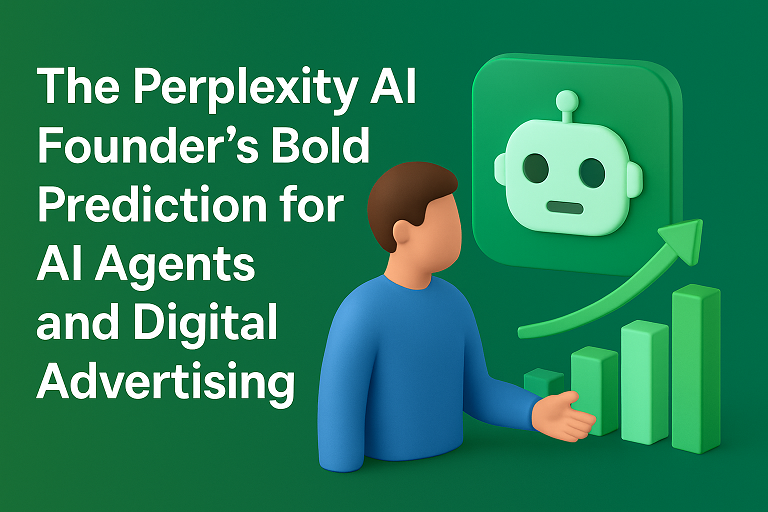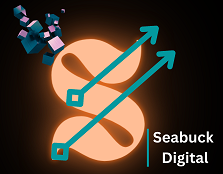
I. Introduction: The AI Agent’s Gaze
The doomscrolling attention economy
We live inside an attention machine: scroll, click, repeat. Billions of daily ad impressions feed algorithms whose sole goal is to keep eyeballs glued to screens. What if the eyeballs disappear from the equation? What if your digital representative — an AI agent — does the browsing, bargaining, and buying for you, and the human never sees an ad? That’s the provocative future Perplexity’s founder sketches.
A radical agent-to-agent ad model
Aravind Srinivas, Perplexity’s co-founder and CEO, has suggested exactly that: ads in future could target AI agents, not humans — merchants would compete to win an agent’s trust and selection rather than a human’s click. This flips the entire advertising playbook from attention capture to agent persuasion.
Perplexity as the ‘answer engine’ challenger
Perplexity has positioned itself as an “answer engine” that synthesizes web information via LLMs and search primitives — a product that already challenges traditional search behavior and is actively building toward agentic features that act on users’ behalf. That product and the team’s outlook make this vision technically plausible and strategically meaningful.
II. The Bold Prediction: Ads for the Agents
The Vision — what Aravind Srinivas actually proposed
Instead of brands paying to interrupt humans, brands would bid for an agent’s endorsement or direct selection. The agent — armed with your preferences, constraints, and rules — evaluates offers and picks the vendor that gives you the best outcome according to its fiduciary logic. Sellers don’t fight for attention; they vie for credibility with a machine that represents many humans at once.
Short quote to anchor the idea
As Srinivas put it: “The user never sees an ad… the different merchants are not competing for users’ attention; they’re competing for the agents’ attention.” That blunt line captures the seismic shift being imagined.
III. The Mechanism: How Agent-Facing Ads Would Work
Step-by-step example — booking a trip
Imagine you ask your agent: “Find me a weekend trip to Goa under ₹20,000, pet-friendly, minimal layovers.” Behind the scenes, multiple vendors present offers. Airlines, aggregators, and travel sites essentially submit structured proposals to the agent — price, cancellation policy, loyalty perks, and special bundles. The agent scores each offer against your profile and chooses the one that maximizes your utility — not the one with the flashiest banner. Think of it as programmatic ad auctions, but the bidder is the agent and the metric is alignment with your personal preferences.
Data, preferences, and the agent’s fiduciary logic
The agent combines explicit rules you set (e.g., “no budget hotels”) with inferred preferences (favorite brands, ethical filters). Importantly, the agent’s decision logic can be constrained or audited: you might require transparency about why one offer was selected. That creates a new set of technical primitives — preference encoding, secure bidding APIs, and verifiable audit trails.
How brands bid, and what the agent evaluates
Brands will likely bid in rich, structured formats: price + service-level metadata + provenance + time-limited perks. The agent evaluates these across dimensions (cost, trust, carbon footprint, speed), runs a multi-criteria optimization, and executes. The “ad” becomes a bid payload, not a visual interruption.
Where human choice still sits in the loop
Humans remain in the loop through guardrails, default preferences, and occasional overrides — agents don’t (and shouldn’t) autocrat purchases without consent. But the cognitive load shifts: you tune your agent once, then trust it to act.
IV. New Revenue Streams: How Perplexity (and others) Could Monetize Agents
1. Direct subscriptions for premium agents
Users may pay for more capable agents — better privacy, faster action, priority integrations — a straight subscription model akin to premium search or premium assistants.
2. Task-based fees (pay-per-task)
Need the agent to research and purchase a complex bundle? A micro-fee for high-effort tasks (negotiating a multi-leg trip, arranging a custom service) is a natural revenue line.
3. Transaction commissions when agents transact
If an agent executes a transaction (books a flight, orders an appliance), a small commission on the sale is an obvious alignment with commerce: the platform earns when it facilitates value.
4. Bids for agent attention — the new ad auction
Finally, the ad model persists — but retooled. Brands will bid for priority access or to be included in an agent’s candidate set. The auction is not for an eyeball but for a slot in an agent’s decision surface. This is the core of Srinivas’s prediction.
V. The Disruption: Why This Matters
For users — privacy, efficiency, and fewer interruptions
If the agent handles bidding and execution, users get fewer trackers, fewer forced impressions, and better outcomes — privacy improves because vendors no longer need to track raw attention signals to influence behavior. The reward: convenience without creepy retargeting.
For advertisers — different KPIs and new bidding wars
Performance marketers must evolve. Clicks and viewability metrics give way to inclusion rates, conversion-to-agent, and “agent-trust” scores. Creative shifts from emotional resonance to verifiable value propositions that agents can reason about.
For Big Tech — an existential challenge to the attention business model
Platforms built on selling human attention face a choice: embrace agentic flows that reduce visible impressions (and hence ad inventory), or double down on maintaining attention. Srinivas argues the latter could be a structural conflict for incumbent ad-driven giants.
Skepticism & open questions — gaming, conflicts, and accountability
Will bids corrupt agent recommendations? How do we audit conflicts of interest if an agent accepts a paying vendor’s offer? Can regulation require disclosure and algorithmic transparency? These are legitimate concerns that industry analysts and privacy advocates are already raising.
VI. The Architects: Perplexity AI Founders and Their Vision
Aravind Srinivas — Co-founder & CEO
An academic-to-founder profile: Srinivas holds advanced CS credentials and has worked at top research labs. He’s the public face of Perplexity’s agent-first vision and has been explicit about the advertising implications of agentic systems.
Denis Yarats — Co-founder & CTO
A deep-learning and reinforcement-learning expert (PhD) with prior research roles in industry AI groups. Denis Yarats’ research chops power Perplexity’s model engineering and agent architectures.
Johnny Ho — Co-founder & Chief Strategy Officer
An algorithms and product strategist with a history in competitive programming and systems roles; Johnny Ho’s product/strategy role focuses on positioning and scale.
Andy Konwinski — Co-founder (scaling & infra)
A veteran of Databricks and the Spark ecosystem, Andy brings hardcore infrastructure and scaling experience — the glue that makes agentic platforms reliable at large scale.
(Collectively, the four founders combine research pedigree, product strategy, and industrial-scale infra experience — the kind of team that can plausibly build agentic systems at web scale.)
VII. Conclusion: Beyond Search to Action — the coming war for agent attention
Aravind Srinivas’s prediction is less a fantasy and more a reframing: if AI agents can represent human preferences reliably, the economics of the web must adapt. Attention as a product gives way to trust and outcome. That means new auctions, new KPIs, and — very likely — a reshuffle of today’s $hundreds-of-billions attention economy into agent-centric marketplaces. Whether Perplexity becomes the poster child of that shift or the first mover that invites competition, one thing is clear: advertisers, platforms, and regulators need to start thinking about who they’re really trying to persuade — the human, or the human’s machine.
FAQs
Q1: Will humans ever stop seeing ads entirely?
Not overnight. Even if agents take on most decision-making, there will still be scenarios where humans prefer direct control or where vendors use optional human-facing promotions. The likely path is a major decline in mass interruptive ads and an increase in agent-targeted offers.
Q2: How would agents avoid being “bought” by the highest bidder?
Technical and regulatory tools can help: auditable decision logs, user-configured priorities (e.g., “never accept paid promotions unless X”), third-party audits, and legal disclosure requirements would be critical guardrails.
Q3: Is this good for publishers and small businesses?
It’s a mixed bag. Smaller sellers could benefit if they can surface high-value, well-structured offers to agents. But they’ll need APIs and standardized bidding formats — failure to adapt risks being excluded by agent default selections.
Q4: How soon could this actually happen?
Agentic features are already rolling into search and assistant products; widescale adoption depends on UX maturity, API standards, and trusted preference storage. Expect incremental changes over 2–5 years, with pockets of agentic commerce sooner.
Q5: Who wins if agents become the norm?
Winners will be platforms that earn trust (and transparency), vendors who can express verifiable value in machine-readable ways, and users who demand privacy-first agent behaviors. Incumbents that cling solely to visible-ad monetization may struggle unless they pivot.

